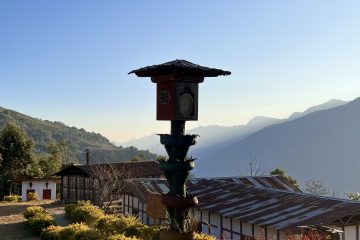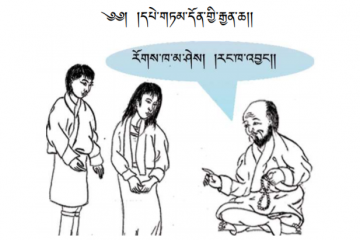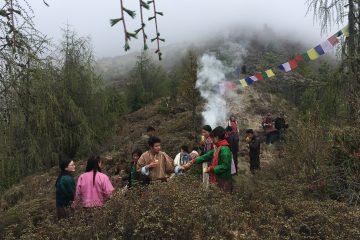While going through my Lightroom catalogue recently, I stumbled across a picture that struck at the quintessential heart of the rustic place that’s a Phobjib farm. The photograph was dated March 5, 2018 – almost a year ago. It impressed me deeply because if I just walk down below our old farmhouse and look east, that’s exactly I would find this year, too- almost a year later.

The only difference was that in that picture, the land was furrowed by potato mounds, and the mustards growing in the enclosure appeared a little longer than this time. Perhaps the heap of straw isn’t there this year. But I know that soon, things will look the exact same. And what’s not surprising: it would have been so 2, 3, no, 5 years back. It stuck me as so seemingly changeless.
There is a legend among the local folks that up there in the woods of the upper dales, the most fortunate come across a baeyul– a sacred, hidden land. If one enters it, time does not pass. In other words, you become an immortal – almost. They say that when the person emerges, it will be in the far future – so, sort of like a holy Rip Van Winkle fable.

To that person, the baeyul must be a place of constancy characterized by constant good. One can safely assume that in a baeyul, there is no change, and hence, no ecstasies or poignancies that usually accompany changes big and small. So perhaps, this place that I live in is a baeyul? Put it like that, it is easy to contrast the two. You see, the constancy in the villages here is largely a phenomenon of one property of farm-life – it’s repetitiveness. And far from the illusion state of constancy, a lot has actually changed in the valley.
And most of all, the people in it are constantly changing. Many young families crop up, and newer, bigger cars drive in. In the winter, the dusty farm roads are ravaged by tractors hauling logs from the woods to elsewhere. And that’s just the tip of the iceberg. I hope I can talk about the changes taking hold in the valley in my next posts! Please tune in!




0 Comments